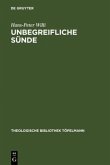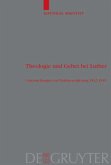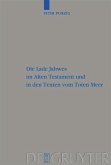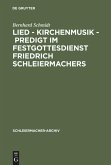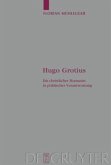Among the works of Johann Arndt, the well-known Vier Bücher vom wahren Christentum had the most impact among readers. Following the history of tradition and the history of motifs, this interpretation focuses on the context of early modern spiritualist and hermetical thought. Arndt´s distinctive theological demand in the sense of a mystical spiritualism as a specific type of early modern "theologia mystica" is depicted in part I, his program of an imagery of books, which is rooted in early modern spiritualism and Hermetic scriptures in part II. In part III the author connects Arndt's "theologia naturalis" (in liber naturae, book IV), which is influenced by theosophical thought, with his "theology of heart" (books I-III).
Three appendixes on Arndt's controversial "esoteric" writings, on traces of his reception in the history of alchemy as well as on numerous representatives of the "magia naturalis" complete the volume.
Das meistverbreitete und wohl wirkungsmächtigste Werk Arndts, die Vier Bücher vom wahren Christentum, werden auf motiv- und traditionsgeschichtlicher Spur im Kontext des frühneuzeitlichen spiritualistischen und hermetisch-paracelsistischen Denkens gedeutet. Arndts profilierter theologischer Anspruch im Sinne eines mystischen Spiritualismus als eigener Typus einer frühneuzeitlichen theologia mystica, die in Spannung zur nachreformatorischen Tradition steht, wird genauso dargestellt (Teil I) wie sein Programm einer Buchmetaphorik, das im frühneuzeitlichen Spiritualismus und Hermetismus wurzelt (Teil II). Schließlich weist Teil III nach, daß Arndts vom theosophischen Denken geprägte theologia naturalis (im liber naturae, Buch IV) eng mit seiner "Herzens-Theologie" (Buch I-III) zusammengehört.
Drei Anhänge zu Arndts umstrittenen "'esoterischen' Kleinschriften", zu Spuren seiner Rezeption in der Geschichte der Alchemie sowie zu mehreren Vertretern der magia naturalis in seinem Umfeld ergänzen den Band.
Three appendixes on Arndt's controversial "esoteric" writings, on traces of his reception in the history of alchemy as well as on numerous representatives of the "magia naturalis" complete the volume.
Das meistverbreitete und wohl wirkungsmächtigste Werk Arndts, die Vier Bücher vom wahren Christentum, werden auf motiv- und traditionsgeschichtlicher Spur im Kontext des frühneuzeitlichen spiritualistischen und hermetisch-paracelsistischen Denkens gedeutet. Arndts profilierter theologischer Anspruch im Sinne eines mystischen Spiritualismus als eigener Typus einer frühneuzeitlichen theologia mystica, die in Spannung zur nachreformatorischen Tradition steht, wird genauso dargestellt (Teil I) wie sein Programm einer Buchmetaphorik, das im frühneuzeitlichen Spiritualismus und Hermetismus wurzelt (Teil II). Schließlich weist Teil III nach, daß Arndts vom theosophischen Denken geprägte theologia naturalis (im liber naturae, Buch IV) eng mit seiner "Herzens-Theologie" (Buch I-III) zusammengehört.
Drei Anhänge zu Arndts umstrittenen "'esoterischen' Kleinschriften", zu Spuren seiner Rezeption in der Geschichte der Alchemie sowie zu mehreren Vertretern der magia naturalis in seinem Umfeld ergänzen den Band.


